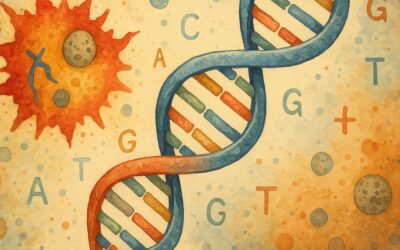Modern life relies on countless chemicals in household products, industrial processes, and agricultural practices. While many of these substances provide convenience and efficiency, they also contribute to long-term environmental problems.
Chemicals from farming to cleaning agents in homes seep into waterways, soil, and the air. This affects ecosystems in ways that may take years or even decades to become fully apparent. The cumulative impact of these substances raises concerns about biodiversity loss, pollution, and changes in natural cycles.
In this article, we will look at how everyday chemicals are impacting ecosystems.
Chemical Pollution in Water Systems
One of the most significant ways chemicals impact ecosystems is through water contamination. Many industrial and household chemicals enter rivers, lakes, and oceans, where they disrupt aquatic life.
Pesticides and herbicides used in agriculture can wash into nearby water bodies, affecting fish, amphibians, and plants. These chemicals often interfere with reproduction and growth, leading to population declines. In some cases, they accumulate in the food chain, affecting larger predators and even humans who consume contaminated fish.
Certain industrial chemicals, such as perfluoroalkyl and polyfluoroalkyl (PFAS), have been found in drinking water sources. These chemicals do not break down quickly, leading to long-term environmental persistence. Many products, including aqueous film-forming foam (AFFF), contain PFAS substances.
According to TorHoerman Law, exposure to PFAS in AFFF can have severe health consequences, including various forms of cancer. Several studies have linked AFFF to testicular, breast, liver, kidney, and many other types of cancer. Therefore, people exposed to AFFF, usually firefighters and military people, have filed AFFF lawsuits against manufacturers.
Besides individuals, municipalities have also filed an AFFF foam lawsuit for water contamination. As the US Department of Veteran Affairs noted, AFFF has been a significant source of groundwater contamination. This is especially true near firefighting and military bases, where AFFF is commonly used for training and other purposes.
Are all chemicals in water dangerous to ecosystems?
Not all chemicals pose a threat, but many synthetic substances disrupt ecosystems. While some organic compounds break down naturally, others, like PFAS and heavy metals, persist in the environment. Even low concentrations of certain chemicals can interfere with aquatic life, affecting reproduction, growth, and food chain dynamics.
Soil Contamination and Its Ripple Effects
Soil contamination is another way in which everyday chemicals create long-term environmental challenges. Fertilizers, pesticides, and industrial waste introduce harmful substances into the ground, reducing soil fertility and altering microbial communities.
A Nature Journal study states that soil contamination is one of the biggest threats to the ecosystem’s health. When soil health declines, it affects plant growth, disrupting food chains that depend on those plants. Some chemicals persist in the soil for years, leaching into groundwater and spreading beyond the initial contamination site.
Heavy metals, often released through industrial processes, can accumulate in soil and vegetation. Plants absorb these toxins, and when herbivores consume them, the contamination moves up the food chain. Over time, this can lead to weakened wildlife populations, reduced reproductive success, and genetic changes in species exposed to these pollutants for multiple generations.
How does soil contamination affect microorganisms, and why does that matter?
Microorganisms play a crucial role in soil health by decomposing organic matter and supporting plant growth. Chemical contamination can reduce microbial diversity, weaken soil fertility, and disrupt nutrient cycles. This affects plant life, which in turn impacts herbivores and other species that depend on healthy ecosystems.
Airborne Chemicals and Their Impact on Wildlife
Air pollution is often associated with urban areas and industrial zones, but its effects reach beyond city limits. Many chemicals released into the air, such as volatile organic compounds and sulfur dioxide, contribute to acid rain and atmospheric changes that alter ecosystems.
Acid rain, caused by industrial emissions, affects forests, lakes, and soil composition, making it harder for plants and animals to thrive. Research by the Queen Mary University of London shows that saltwater wildlife has slightly adapted to this change. However, freshwater wildlife has been slow to adapt, which has put many rare species at risk.
Similarly, a ScienceDirect study concludes that acid rain can affect plant-associated soil microorganisms. This results in soil acidification and nutrient deficiency, indirectly impacting plants.
Pesticides and herbicides can also become airborne, drifting away from their intended locations. This affects non-target organisms, including pollinators like bees and butterflies. A decline in these species disrupts plant reproduction and reduces animal food availability. Over time, such disruptions can lead to cascading effects that change ecosystems.
Can air pollution from one country affect ecosystems in another?
Yes, airborne pollutants can travel thousands of miles, crossing national borders. Wind currents carry substances like sulfur dioxide, nitrogen oxides, and pesticides, leading to acid rain and air quality issues in distant ecosystems. This global movement complicates pollution control and requires international cooperation.
The Long-Term Consequences on Biodiversity
Biodiversity declines when ecosystems face continuous chemical exposure. Sensitive species are often the first to be affected by this decline. More resilient species may adapt, but they still have to face various consequences.
Over time, ecosystem imbalances can lead to the dominance of certain species while others struggle to survive. This loss of biodiversity weakens ecosystems, making them less able to recover from environmental stressors such as climate change and habitat destruction.
Aquatic dead zones caused by fertilizer nutrient pollution provide a clear example of how chemical contamination alters ecosystems. Excess nutrients lead to algal blooms, which deplete oxygen levels in water, creating conditions where few organisms can survive. These dead zones disrupt fisheries and marine food webs, illustrating how human activity can permanently reshape natural environments.
How can chemical pollution lead to the extinction of certain species?
Chemical exposure can weaken populations over time by reducing reproductive success, increasing disease susceptibility, and altering genetic traits. Species with low adaptability may decline significantly or go extinct if their food sources are contaminated or their habitats become toxic.
Addressing the long-term effects of chemical pollution requires both individual and collective action. Reducing reliance on harmful substances, improving waste management, and supporting policies that regulate industrial chemicals can help minimize environmental damage. Scientific research is crucial in identifying risks and developing safer alternatives, ensuring that future generations inherit healthier ecosystems.
By recognizing how everyday chemicals influence ecosystems over time, society can take steps to mitigate damage and promote sustainable practices. While the effects of past pollution cannot be undone overnight, proactive efforts can prevent further harm and restore balance to the natural world.










0 Comments